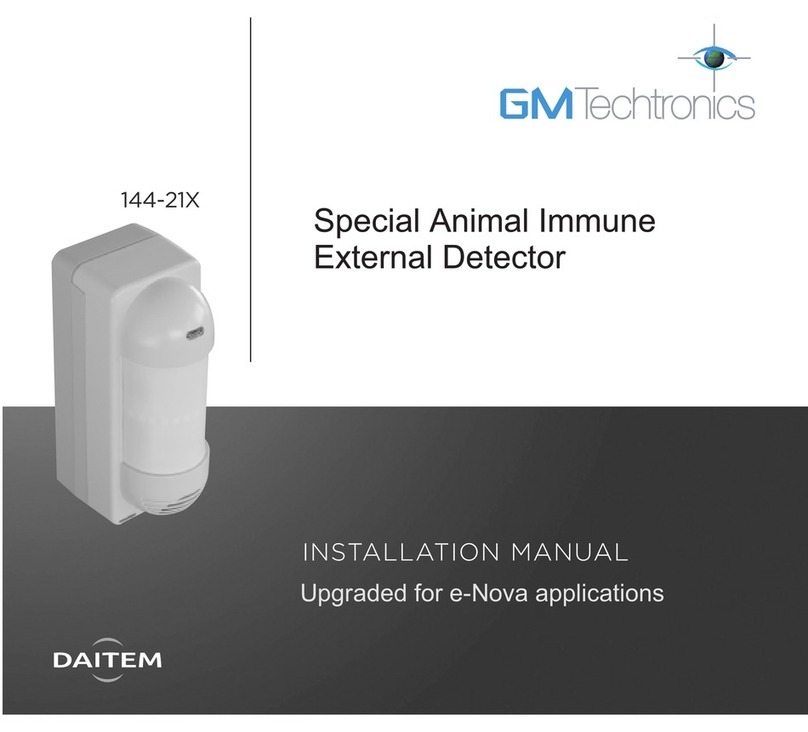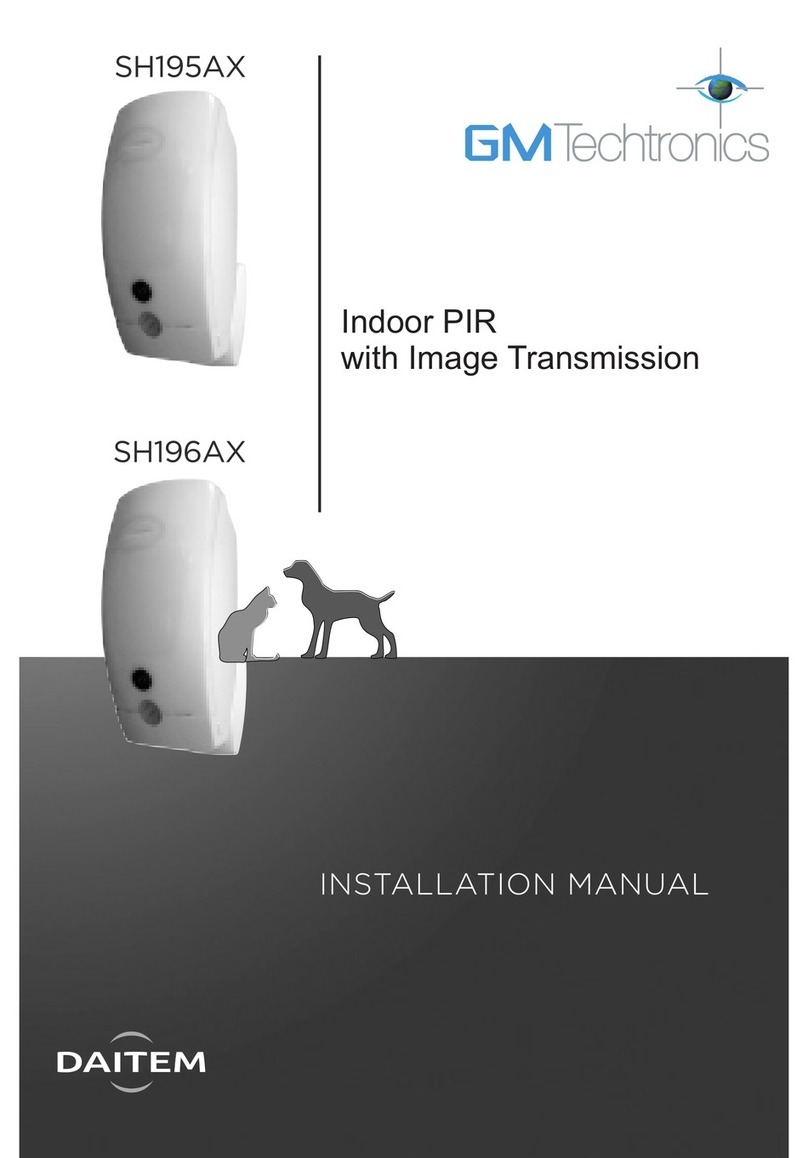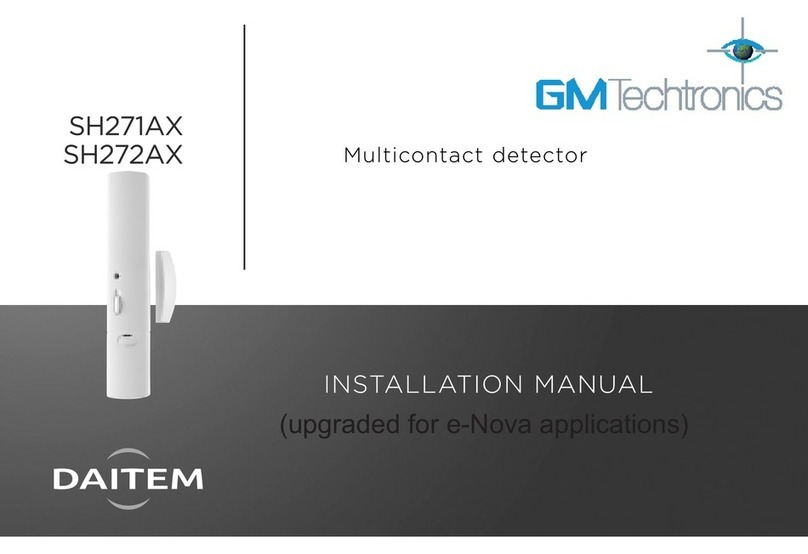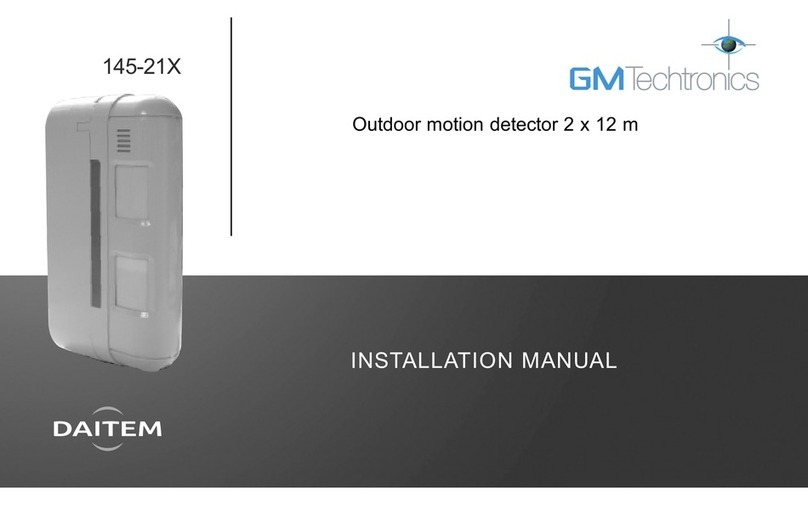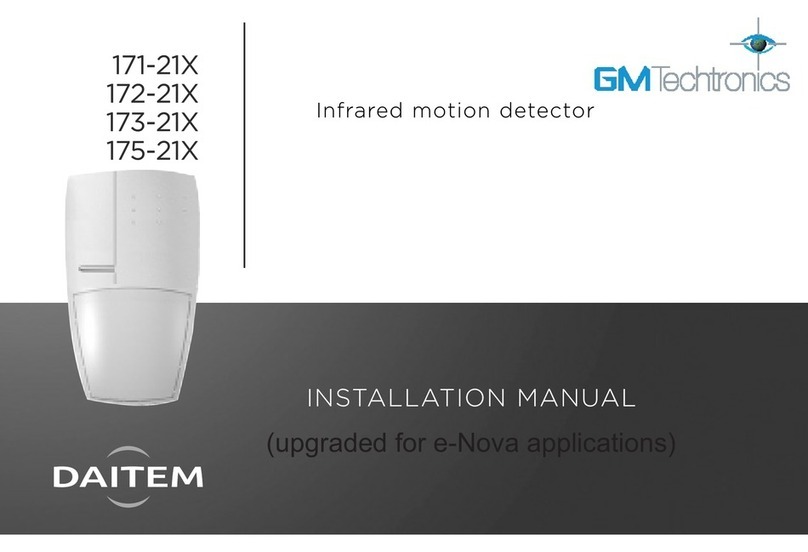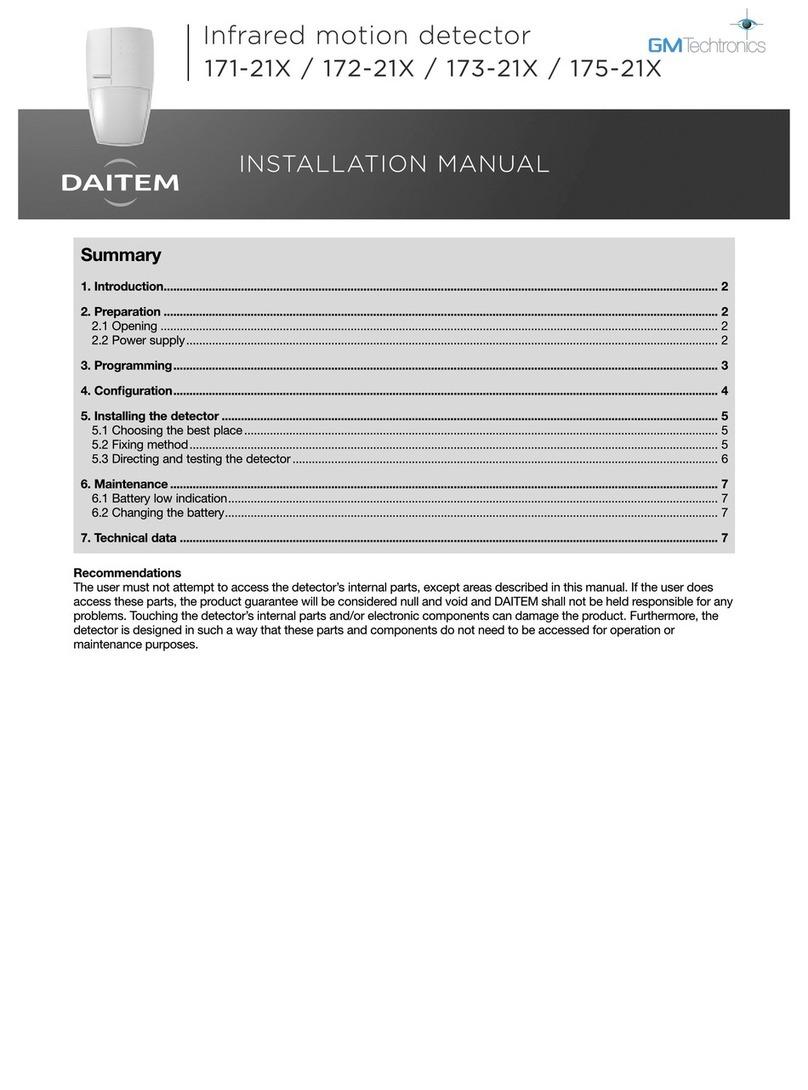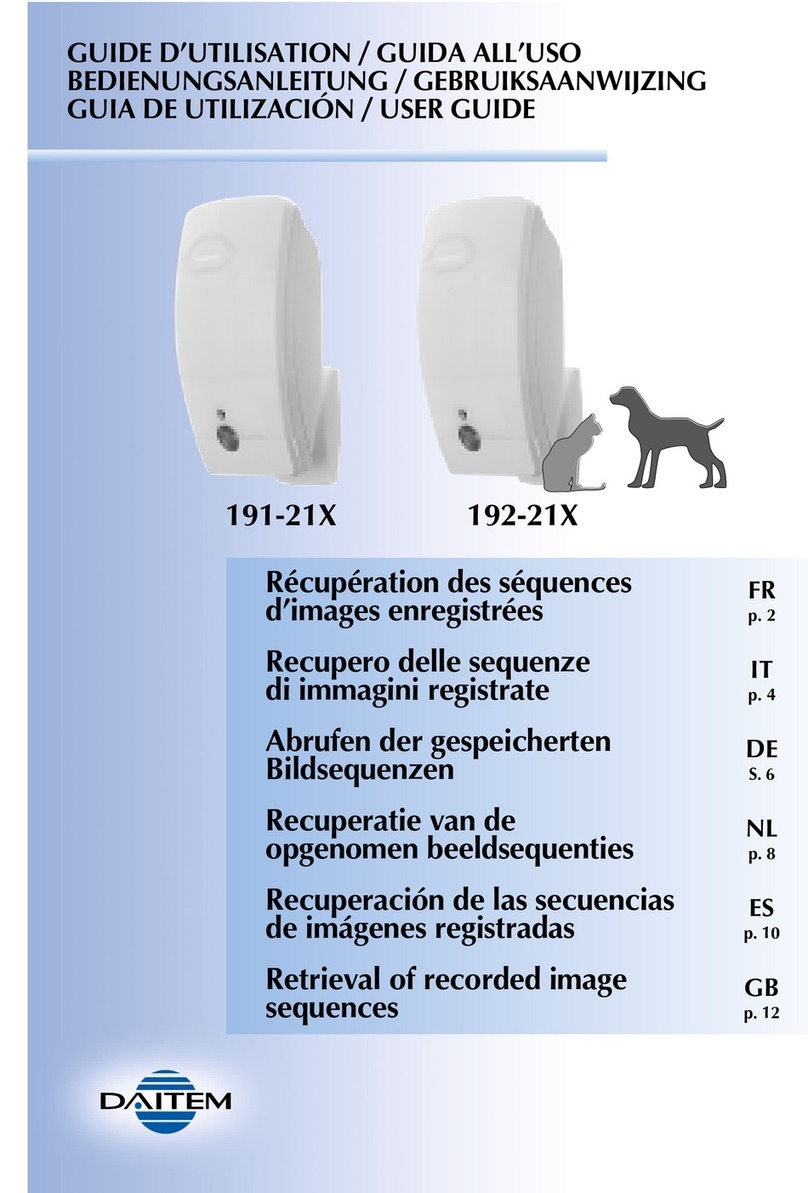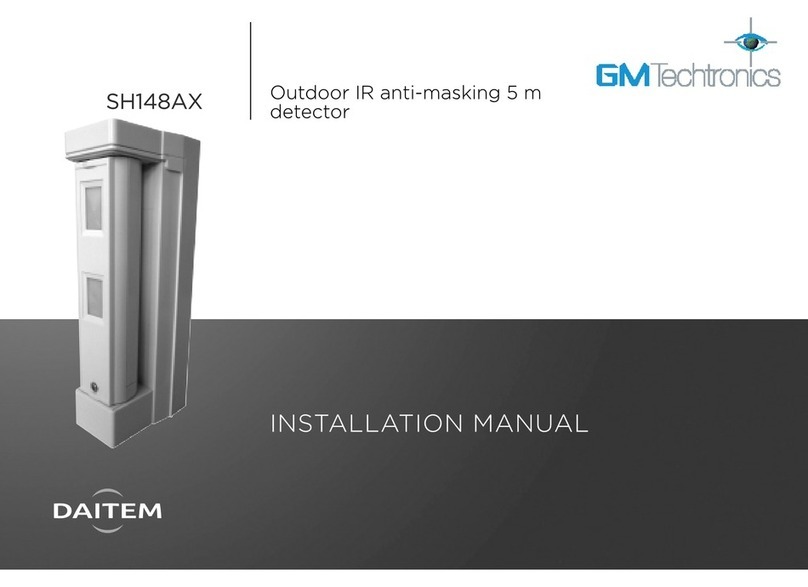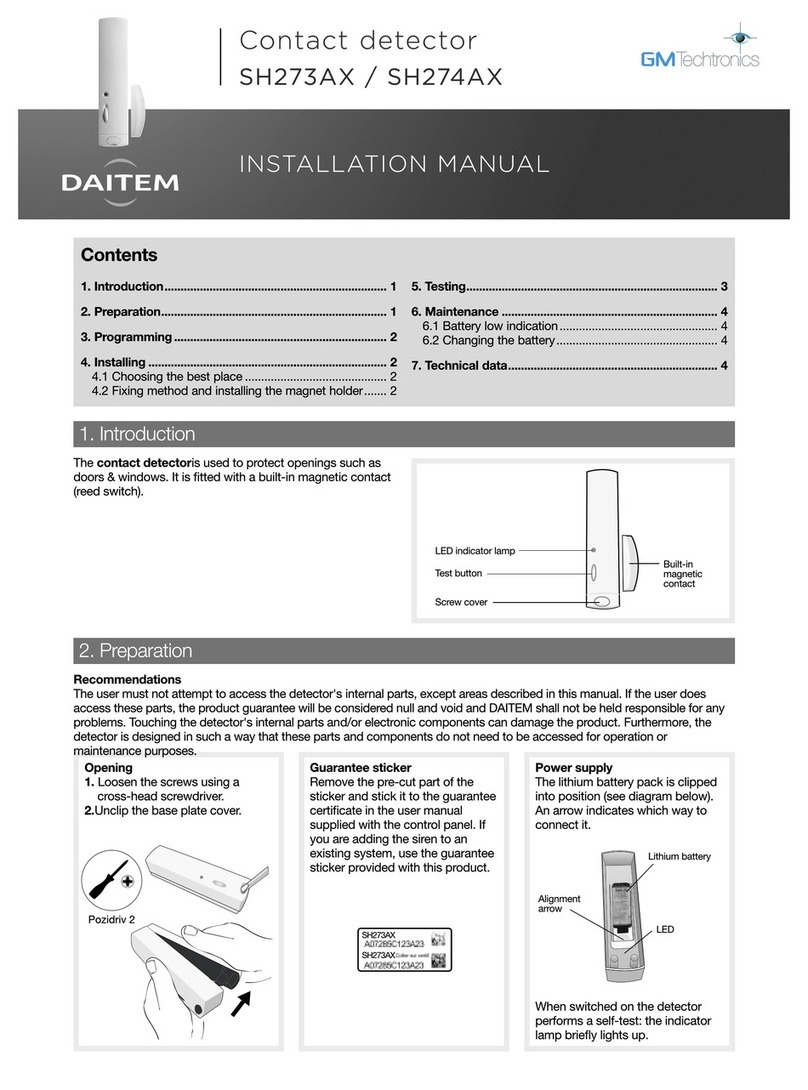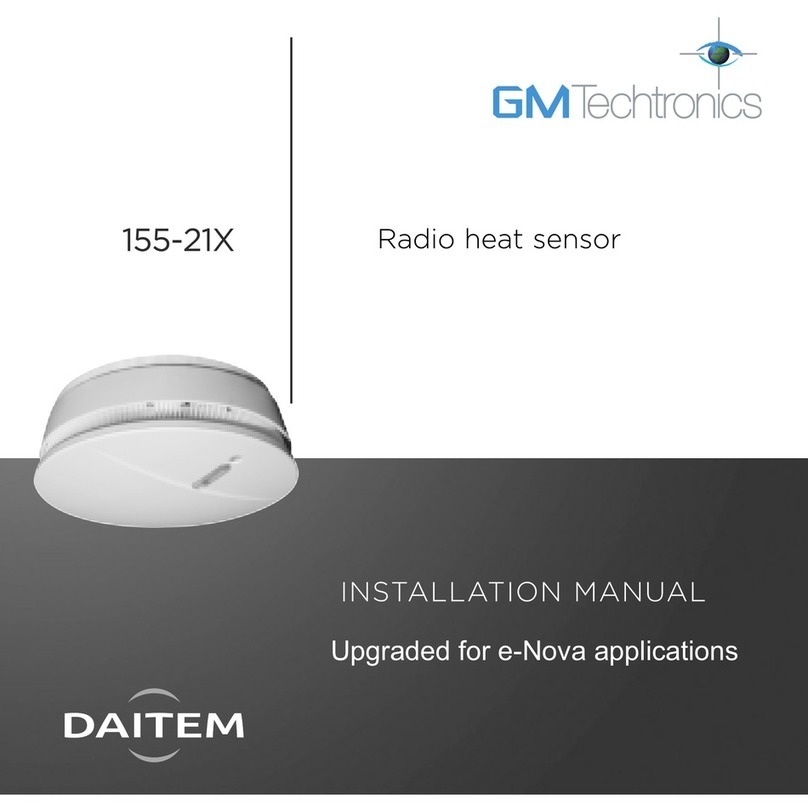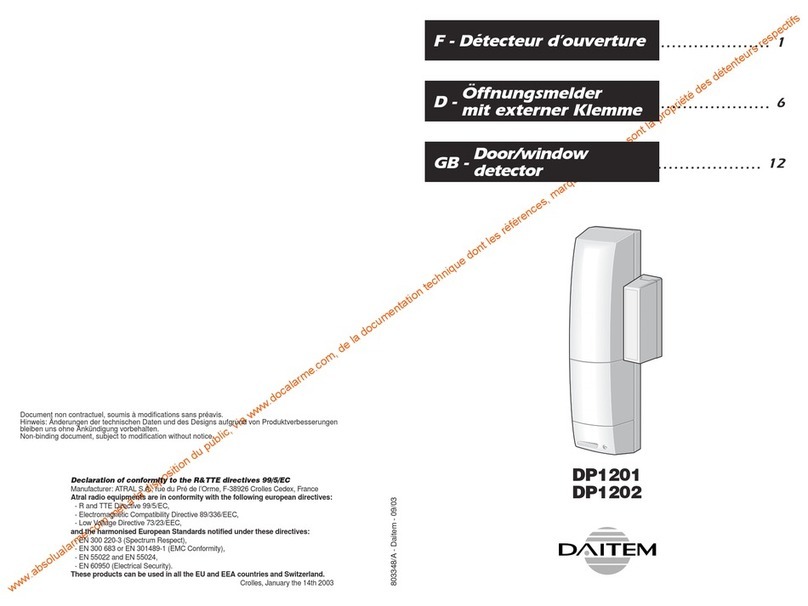9
D
8
D
●Gegenüber von Spiegeln und Fenstern
●Auf die Außenwände gerichtet
●Direkt auf Metallflächen
●So, dass ein Gegenstand (z. B. Möbel, große Pflanze, etc.) zwischen
dem Melder und dem zu überwachenden Bereich liegt.
●Einen Kreuzschlitz-Schraubendreher 3 oder 4 mm
●Einen Steinbohrer mit 6 mm Durchmesser
●Die mitgelieferte Batterie
●Das mitgelieferte Montagezubehör: 1 Kugelgelenk, Sockelplatte, 1 lange
Schraube, 1 Dübel, 1 Unterlegscheibe
BILD A Vorderansicht
➀ Detektionslinse. ➁ Test-Taste
BILD B Öffnen
Öffnen Sie das Gehäuse, indem Sie mit einer Münze leicht gegen die
alteklammer drücken ➂.
BILD C Garantieaufkleber
■Bringen Sie den oberen Teil des Garantieaufklebers (im Gerät) auf der
Garantiekarte an. Der untere Teil des Aufklebers bleibt im Gerät.
●Sie installieren das System neu: Verwenden Sie die Garantiekarte, die
der Bedienungsanleitung des gesamten Systems beiliegt.
●Sie erweitern eine bereits bestehende Anlage: Verwenden Sie die
Garantiekarte, die diesem Produkt beiliegt.
■Sollte keine Garantiekarte mitgeliefert werden, so wenden Sie sich an
Ihren ändler, bei welchem Sie die Anlage erworben haben.
BILD D Einsetzen der Batterie
Klipsen Sie die Batterie in den Batteriehalter ein. Achten Sie dabei auf die
richtige Polung.
BILDER D und EPersonalisierung
Personalisieren Sie Ihren Melder mit ilfe der beiden Tasten 0 und 1.
Programmieren Sie nun Ihren geheimen Anlagencode durch aufeinander-
folgendes Drücken der Tasten 0 und 1. Legen Sie dann die Betriebsart des
Melders fest.
●Programmieren des Anlagencodes (Bild D)
Achten Sie darauf, dass die Zentrale schon codiert ist, bevor Sie dem
Melder den Anlagencode zuweisen.
Die werksseitige Codierung des Bewegungsmelders ist 1111111111.
Inbetriebnahme
Sie benötigen
■Der Passiv-Infrarot-Bewegungsmelder dient zur Überwachung von
Innenräumen, z. B. Wohnräume, Diele und Keller. Er erkennt die schnelle
Veränderung der Infrarotstrahlung in seinen Detektionszonen und nimmt
somit ein unbefugtes Betreten des Überwachungsbereiches wahr. Per
Funk wird das Signal an Ihre Zentrale übertragen. Der Überwachungsbe-
reich ist durch die Wände des Raumes begrenzt.
●2-Frequenz-Übertragungsverfahren
●Linie, Anlagencode und Betriebsart personalisierbar, die Eingabe erfolgt
über 2 spezielle Tasten
●24 Doppelzonen auf 3 Ebenen mit 12 Metern Reichweite und 75/90° Öff-
nungswinkel
●Betriebsart:
- auf Linie 1: Alarmbereit bei Teil und Gesamt Ein für Sofortauslösung
- auf Linie 2: Alarmbereit bei Teil und Gesamt Ein für verzögerbare
Auslösung
- auf Linie 3: Nicht in Betrieb bei Teil Ein Alarmbereit bei Gesamt Ein für
Sofortauslösung
- auf Linie 4: Nicht in Betrieb bei Teil Ein Alarmbereit bei Gesamt Ein für
verzögerbare Auslösung
●Test-Taste und LED ermöglichen:
- die Anzeige des Überwachungsbereichs
- die Auslösung des Funktests zur Reichweitenermittlung
- die Kontrolle der Funkverbindung
- die Überprüfung der Programmierung des Anlagencodes
- manuelles Abfragen des Batteriezustandes
●personalisierbarer Anlagencode
●Ständige Überwachung auf unbefugtes Öffnen des Gehäuses durch
Deckelkontakt
●mindestens 2 Jahre Batteriebetriebszeit durch mitgelieferte Batterie.
■Montieren Sie den Bewegungsmelder wie folgt:
●Im Innenbereich des Objektes
●Möglichst in ca. 2,20 m öhe
●Der Überwachungsbereich sollte sich nicht mit dem eines anderen
Melders kreuzen. Die Zentrale sollte sich im Überwachungsbereich eines
Bewegungsmelders befinden (Bild I).
●Der Raum muss parallel zum Melder durchschritten werden können (Bild I).
■Montieren Sie den Bewegungsmelder generell nicht wie folgt:
●In der Nähe von Wärmequellen, wie z. B. elektrischen eizkörpern,
eizstrahlern, Kaminzügen und eizlüftern
Besondere Montagehinweise
Arbeitsweise
Beschreibung
Vorsicht: Achten Sie darauf, dass Sie während der Programmierung
nicht die Test Taste drücken.
